Forgery in cryptology (1)
There are a surprising number of encrypted documents that are, or at least could be, forgeries. Today I present five more of them.
English version (translated with DeepL)
To my knowledge, no one has ever systematically dealt with fake encrypted messages. Yet there are more than enough of them. I presented five examples in the first article of this mini-series, and there was also a recent post on Cipherbrain that looked at the Dorabella cryptogram as a possible forgery.
In the following, I present a few more ciphertexts that are, or could with some probability be, forgeries.
The Chinese gold bars
In the 1990s, the cryptologists’ organisation IACR (International Association for Cryptologic Research) received mail from a museum in the USA. The curator of this museum sent photos of seven gold bars, each with several lines of encrypted text. He hoped that the IACR could help solve these cryptograms.
However, the IACR is the wrong contact for such a cryptology problem. This organisation does not deal with historical cryptograms, but with modern, computer-aided cryptology. It would have been better to turn to the American Cryptogram Association. Today, of course, my Cipherbrain blog would be the right address.
The IACR put the most important details about this cryptogram here on its web page and named two contact persons for further questions. Since e-mail was not yet standard at that time, the postal addresses of these two people were given along with fax and telephone numbers. Together with Elonka Dunin, I actually managed to get one of the contact persons, the lawyer Peter Bisno, on the phone. However, he was barely able to say that the other, a certain Bin J. Tao, is the current owner of the gold bars. We have not been able to reach him. It remains unclear which museum made the request to the IACR at the time.
The IACR website tells us that the gold bars were probably made for a General Wang in Shanghai in 1933. They are supposed to be a certificate that the owner has an account at a bank in the USA. There are some Chinese characters on them that can be read (among other things, it is about a money transfer of 300 million dollars). The gold bars weigh a total of 1.8 kilograms.
The coded lines on the bars are still unsolved. Some of them are repeated. There are 16 different ones in total:
SKCDKJCDJCYQSZKTZJPXPWIRN length 25 MQOLCSJTLGAJOKBSSBOMUPCE length 24 RHZVIYQIYSXVNQXQWIOVWPJO length 24 FEWGDRHDDEEUMFFTEEMJXZR length 23 XLYPISNANIRUSFTFWMIY length 20 HFXPCQYZVATXAWIZPVE length 19 YQHUDTABGALLOWLS length 16 UGMNCBXCFLDBEY length 14 ABRYCTUGVZXUPB length 14 JKGFIJPMCWSAEK length 14 KOWVRSRKWTMLDH length 14 HLMTAHGBGFNIV length 13 MVERZRLQDBHQ length 12 VIOHIKNNGUAB length 12 GKJFHYXODIE length 11 ZUQUPNZN length 8
A frequency analysis shows that in these 16 cryptograms taken together, all letters occur almost equally often. Therefore, it cannot be a simple letter substitution or transposition. Perhaps a reader has an idea how to decipher these lines.
Of course, it is also interesting to ask what is real about the gold bars. Are they really made of gold? Were they really created as a document confirming the existence of an account and/or a transaction worth hundreds of millions of dollars? Are there other examples of a deed being recorded on gold bars?
Unfortunately, virtually nothing is known about the provenance of the bars. At best, the current owner is known by name. Who owned these gold bars before, how old they are and who made them is unclear.
It is therefore quite possible that these gold bars are a fake.
Maria Bendina’s notes
In 2016, I found a particularly beautiful encrypted text from the 16th century via a Google search: the notes of the nun Maria Bendina. Of course I blogged about it.
However, my readers (Lercherl, Thomas Bosbach, Norbert Biermann and Notula) were justifiably quick to agree that it was a hoax. The three students who claim to have found this document apparently come from the field of graphic design, not historical research. Presumably they created these notes themselves.
To my knowledge, this cryptogram has never been published in a journal or any other serious source. Together with Paolo Bonavoglia, I have nevertheless tried to contact the three students – in vain. Besides, the provenance (i.e. the history) of this “find” is completely unclear. We are therefore dealing with a forgery.
The Voynich Manuscript
When it comes to forgeries in crypto history, there is no getting around the famous Voynich manuscript, that handwritten book that no one can read.
The parchment on which this mysterious work was written dates from the early 15th century. Apart from that, almost nothing can be said about the origin of the Voynich manuscript. Most experts assume that the book is not insignificantly older than the parchment and was therefore created in the middle of the 15th century at the latest.
But what purpose was the manuscript supposed to serve? My preferred (but by no means proven) assumption is that a forger created this book in order to sell it for a lot of money to a rich contemporary, or that the rich contemporary commissioned the manuscript. If this were true, then the Voynich manuscript would be a forgery with the sole purpose of creating an enigmatic document for a collection.
However, there is also the hypothesis that Wilfried Voynich, who claims to have acquired the manuscript as a chance find in 1912 and after whom it is named, forged it himself. Voynich dealt in old books by profession and therefore had both a motive and the know-how for a forgery.
The fact that the content of the manuscript is as meaningless as possible speaks not least for a forgery from the early 20th century. The writing is unknown, the content unreadable, the depicted plants unidentifiable and the depicted women (as they are unclothed) unattributable to any time or region. Even the astrolgical symbols depicted say nothing, since astrology was known pretty much always and everywhere in the history of Europe. So it seems that a forger was at work who wanted to prevent at all costs that anything about this book could arouse suspicion.
However, the provenance speaks against a forgery by Voynich. After all, we know that the parchment dates from the 15th century. Moreover, a matching manuscript is mentioned in several letters from the 17th century. Did Voynich know these letters and forge the matching manuscript with old parchment? So far, this hypothesis has not been completely ruled out, even though most experts consider it unlikely.
The treasure and the encrypted text of La Buse
Olivier Le Vassuer (ca. 1690-1730), also known as “La Buse” (the Buzzard), was a pirate who roamed the Indian Ocean. He was captured in 1729 and executed a year later on the island of La Réunion. According to legend, Le Vasseur already had the gallows rope around his neck when he threw a parchment into the crowd and shouted: “My treasures to him who understands this.” On the parchment was a coded message. It is said to have looked like this:
As you can easily see, it is a Pigpen cipher (or a variant of it). The cipher was solved in 1947 by an Englishman named Reginald Cruise Wilkins. The plaintext is (according to Nick Pelling):
aprè jmez une paire de pijon tiresket
2 doeurs sqeseaj tête cheral funekort
filttinshientecu prenez une cullière
de mielle ef ovtre fous en faites une ongat
mettez sur ke patai de la pertotitousn
vpulezolvs prenez 2 let cassé sur le che
min il faut qoe ut toit a noitie couue
povr en pecger une femme dhrengt vous n ave
eua vous serer la dobaucfea et pour ve
ngraai et por epingle oueiuileturlor
eiljn our la ire piter un chien tupqun
lenen de la mer de bien tecjeet sur ru
nvovl en quilnise iudf kuue femm rq
i veut se faire dun hmetsedete s/u dre
dans duui ooun dormir un homm r
esscfvmm / pl faut n rendre udlq
u un diffur qecieefurtetlesl
Unfortunately, no one has been able to do anything with this gibberish so far. Is the cryptogram at least real? In response, I quote a comment that Cipherbrain reader A.C.S. recently published:
Since I am currently writing my master’s thesis and wanted to use part of the myth about La Buse, I can only tell you one thing: if you cannot use something for a scientific thesis because of a lack of sources that cannot be traced back, it is very likely not genuine. You can’t even trace back the myth or prove it and you only have the dates 1720/30 and 1920. There’s nothing in between, after that there was only a hype again in the 2000s. There was the pirate and of course he had his treasures, but everything else is sailor’s yarn, who didn’t even dive enough for that, otherwise it would all be more popular and not just a local tourist catch.
The Cryptogram of Oak Island
Oak Island is a small island in the Atlantic Ocean off the coast of Canada. On this island, far from any civilisation, an artificial shaft is said to have been discovered in the 18th century, which protruded dozens of metres deep into the earth. There are numerous speculations and legends surrounding this alleged structure. Of course, it was also suspected that someone had hidden a treasure there.
Today, unfortunately, it is no longer clear whether the alleged shaft ever existed. So much digging has been done at the site in question that nothing can be seen any more. It is quite clear, however, that the following cryptogram, which is said to have been found in the shaft, is a fake:
The plain text reads: “Ten feet below are two million pounds buried.”
The original plaque with the inscription has been lost. Needless to say, no one has yet found the two million pounds.
Conclusion
As already mentioned, there are different reasons to forge a coded text. Sometimes it is greed for money (that could have been the motive in the case of the Voynich manuscript), sometimes it is simply the desire to take the mickey out of others (as in the case of the Oak Island cryptogram). What the motive might have been in the case of the Chinese gold bars is unclear.
There are, of course, other cryptologic forgeries. Whether I will write another blog article on this topic, I cannot say at the moment.
If you want to add a comment, you need to add it to the German version here.
Follow @KlausSchmeh
Further reading: An encrypted book, similar to the Voynich Manuscript
Linkedin: https://www.linkedin.com/groups/13501820
Facebook: https://www.facebook.com/groups/763282653806483/

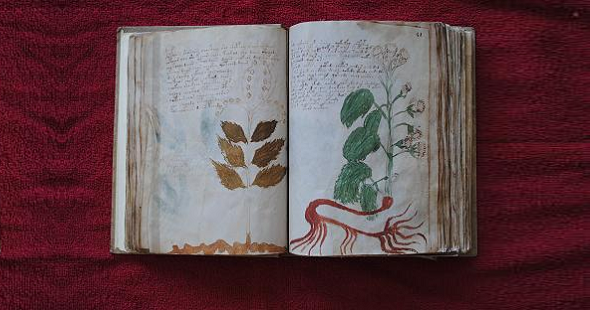
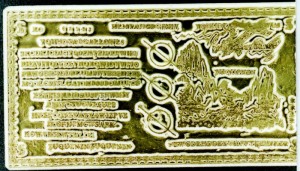
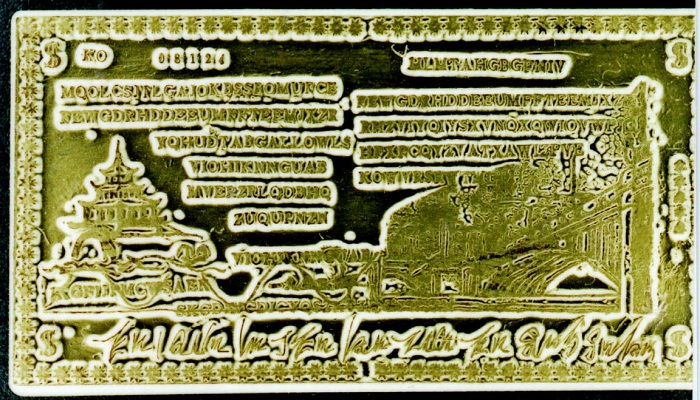
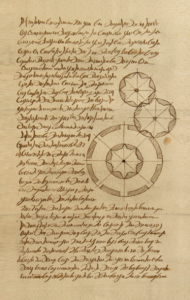
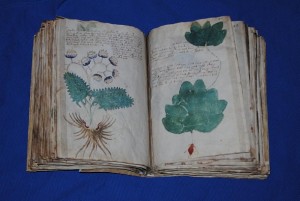
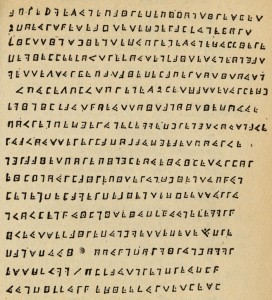
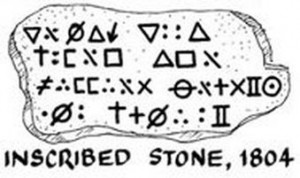

Letzte Kommentare